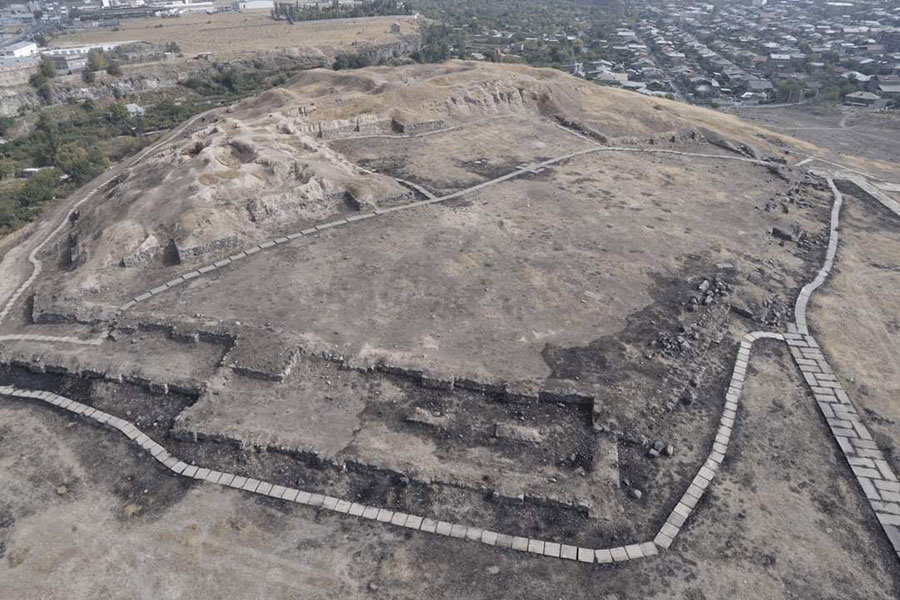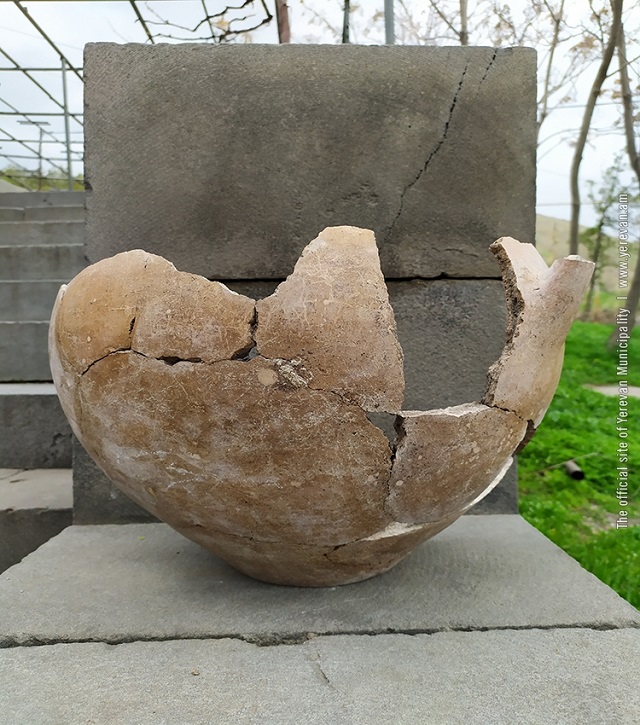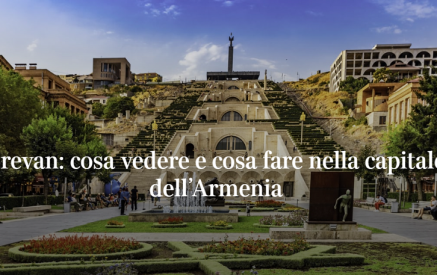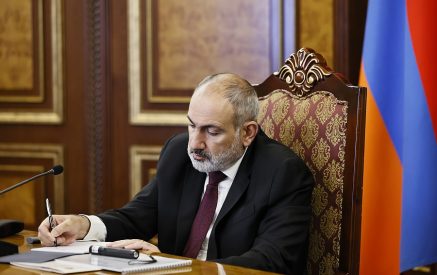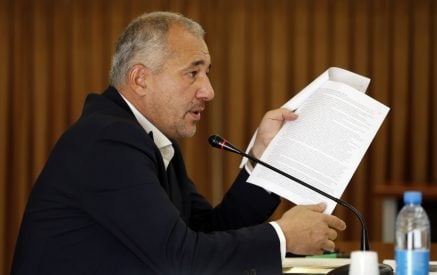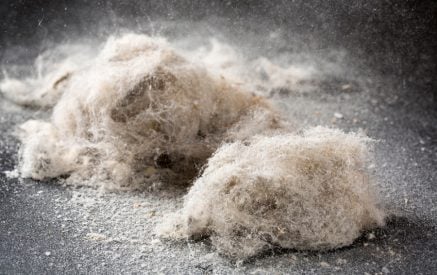The field of archaeology in Armenia is currently in an active, dynamic phase. Excavations continuously reveal new archaeological items that open the pages of Armenian history. These discoveries present the lifestyle and habits of Armenian ancestors and testify to their indigeneity.
The Erebuni Historical and Archaeological Reserve-Museum stands out for its significant archaeological activity. Founded on October 19, 1968, to mark the 2,750th anniversary of Yerevan, the museum was established with the material cultural remains and discoveries from three famous ancient sites within the city’s administrative boundaries: Arin Fortress, Karmir Blur and Shengavit.
The “passport” of Yerevan, a cuneiform record by King Argishti I about the construction of the Erebuni fortress, is preserved at the museum. This fortress, built by King Argishti I in 782 BC, has been a focal point of archaeological studies. Excavations at the site, with some breaks, lasted for 20 years, from 1951 to 1975.
Erebuni museum is among the most welcoming of Yerevan’s ancient sites. In 2023, it had 37,182 visitors, and it welcomed more than 2,000 visitors during the “Museum Night” events in May.
Read also
To gain deeper insights into current efforts at the Erebuni museum, the Weekly spoke with Vahe Sargsyan, its acting director. He underscored the ongoing importance of the museum’s work.
The Erebuni Historical and Archaeological Reserve-Museum continues to carry out serious work, especially in the field of ongoing Karmir Blur excavations. Teishebaini (also known as Teshebani, modern Karmir Blur) refers to the hill on which the fortress is located. It was the capital of the Transcaucasian provinces of the ancient kingdom of Urartu. This site is near the modern city of Yerevan in Armenia. Teishebaini was once a fortress and government center, featuring towered and buttressed perimeter walls, massive gates, a parade ground within its walls and ground-floor storage rooms.
As early as in the fall of 2021, during excavations at Karmir Blur carried out by an Armenian-Austrian archaeological expedition, a trace of a wall was found. “We did on-site reconnaissance to make sure that we are dealing with an archaeological layer, and our hypothesis was confirmed,” Sargsyan said. Surveying the area with a drone, it was confirmed that there is a complex structure with strong walls, about 20 m long and 1.60 m wide, in that area.
“It became clear that a unique structure has been discovered in the Republic of Armenia and, in general, in the Armenian Highlands. It is one of the city buildings built by Urartu King Rusa II in the seventh century BC. It is a three-part structure, the right and left parts of which were designed for a specific purpose, and the central part is the path of human movement. The floor is completely covered with flagstones, and the height of the preserved walls is more than a meter, making it unique, considering that it is located in the territory of our capital. To my knowledge, a monumental structure of this kind has not been unearthed in decades,” Sargsyan said.
Sargsyan explained what purpose the structure served when it was standing. “Such structures exist in modern Israel and in the present territory of Turkey, and more precisely, in the Armenian Korchaik province. According to one view, it could have been a market, or according to another, a stable-caravan. One more observation: in the Urartian period, not every mortal was destined to enter the citadel, which is an extremely important structure from a strategic point of view. Therefore, it can be assumed that the discovered structure could be a place where passers-by and members of the king’s retinue rested,” he said.
After the 1970s, no excavations were carried out in the “Red Hill” for decades, and almost no funding was allocated to this ancient site. Yet a few years ago, during the construction of the North-South highway through Armenia, a part of which passed through the territory of the ancient site, archaeologist Hakob Simonyan excavated 300 tombs with the financing of the construction organization. The expedition is currently carrying out excavations in Karmir Blur with state funding.
Sargsyan notes that Karmir Blur is rich in archaeological materials, including grain, parts of textile pieces and Scythian objects, such as weapons, horse equipment and jewelry. According to the archaeologist, the structure continues to surprise the expedition. He did not mention specific dates for the end of the excavations.
The Erebuni museum hosts various events for the popularization and preservation of Armenian culture. On February 14, 2024, in the Urartu hall of the State Hermitage of St. Petersburg, a section dedicated to the Erebuni museum was opened.
The Erebuni museum is among few museums in the world that has a section in an esteemed global cultural institution like the Hermitage. With the joint efforts of Erebuni and Hermitage researchers, a popular scientific and illustrated booklet has been created which visitors can pick up free of charge. The Erebuni section at the Hermitage will be maintained for at least one year.
“Any cooperation with the museums of other countries should be based on the need to preserve the Armenian value system without unreasonably questioning their exact meaning,” Sargsyan said.
by Anna Harutyunyan



















































